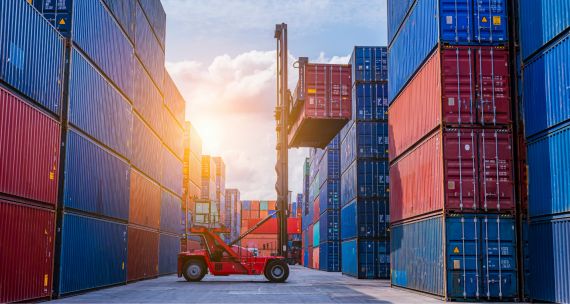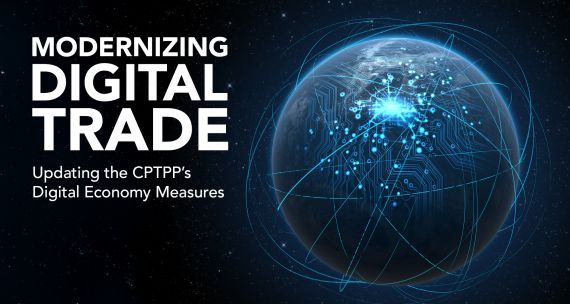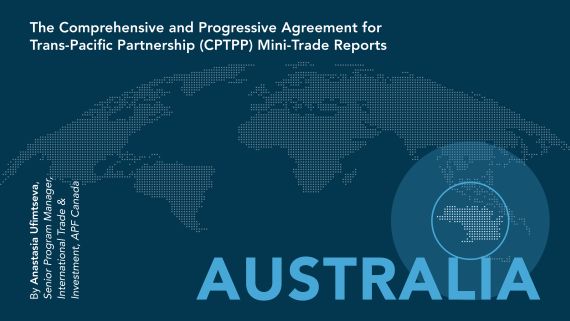After trashing the Trans-Pacific Partnership (TPP) during his election campaign, and following through on his election promise to withdraw the United States from the pact right after taking office, Donald Trump is now musing about having the US rejoin what is currently called the Comprehensive and Progressive Agreement for Trans-Pacific Partnership (CPTPP). Following the US withdrawal, the remaining 11 members, including Canada, continued talking and finally concluded the deal early this year. It was signed in March in Chile. Once it is ratified by 6 of the 11 partners, it will come into effect.
In concluding the deal, the remaining members basically adopted the pact that had been negotiated when access to the US market was part of the equation (minus US market commitments), although they “suspended” a few articles, including several in the intellectual property chapter that were of prime interest to the Americans. They also added some side letters for clarification. Now, suddenly, the Trump administration is interested in possibly becoming a member, driven in part by US domestic concerns over the impact on parts of the US economy from a trade war with China. Whether Trump follows through is another question, since the administration’s priorities seem to change from one day to the next. But just the fact that Trump says the US is willing to look at rejoining the TPP raises some interesting questions.

The Trump administration seems to assume that all the US has to do is express interest and the doors will open magically. That is unlikely to happen. For the US to rejoin, all 11 negotiating partners would have to agree. Already, Australia and New Zealand have expressed the view that US re-entry would be complicated, requiring new negotiations. At the end of the day, New Zealand will come on board, because one of the main motives for its support of the original TPP was improved access to the US market. Japan is also a key partner. So far, signals from Japan have been mixed. Trump would like to manoeuvre Japan into bilateral negotiations, something about which Prime Minister Shinzo Abe is rightly cautious, given the likelihood that the US will press for “managed trade” in a number of sectors. Dealing with US-Japan trade relations in a regional, plurilateral framework could be attractive for Japan and could constrain US leverage.
Meanwhile, what should Canada’s position be? It is somewhat ironic to find the US in the position of being a demandeur as it possibly seeks re-entry into the TPP, since the US was distinctly unhelpful when Canada was in the position of being a supplicant. Canada missed the first wave when countries joined the negotiations in 2008, and later it had to push hard to gain entry. Ed Fast, trade minister at the time, made several visits to TPP capitals to line up support for Canadian participation and to bring pressure to bear on the US. But it was not until the APEC summit in Honolulu in 2011 that President Obama finally signalled US support of Canada’s (and Mexico’s) participation. Canada finally joined the TPP negotiations in mid-2012. Now the shoe is on the other foot and the US will have to get Canada’s acquiescence.
What’s in it for Canada, particularly with the ongoing NAFTA negotiations possibly being in their end game? Supporting US re-entry would provide Canada some leverage that could be used indirectly at the NAFTA table, just as the US is using as leverage the suspended steel and aluminum tariffs that it says it will impose on Canada if NAFTA is not concluded. But one of the big advantages for Canada of the revised CPTPP was that the US was not part of it, particularly with respect to the Japanese market. The absence of the US from the partnership means that Canadian products that compete with equivalent American products in Japan will have a tariff advantage once the CPTPP comes into effect. So, from this perspective, the longer the US is not in the CPTPP, the better it is for Canada. However, despite immediate advantages deriving from the exclusion of the US, a broader perspective brings other factors into play.
One of the main arguments for the original TPP was to cement a leading role for the US in championing trade liberalization in the Asia-Pacific region, as well as the strategic advantage that it offered as a counterweight to China by confirming US commitment to the region. This was all blown out of the water by Trump’s ill-considered, precipitate withdrawal. While Canada could derive some short-term trade advantage from the absence of the US from the trans-Pacific pact, from a long-term strategic perspective, it is to our advantage to have the US re-engage. However, an important question is what price Canada — or the US — will have to pay to achieve this goal. Trump has said that the US will engage only if it gets a “better deal.” What that means in practical terms is anyone’s guess.
While not being obstructionist, Canada should use its leverage of being “inside the TPP tent” to ensure that the US does not get a free ride in its readmission to the negotiations. The US should be prepared to “pay” for re-entry and certainly pay for any new concessions it wants from the other partners — just as it extracted concessions from Canada when we were in the demandeur position. What form this “payment” will take could be the subject of interesting discussions. Presumably the US will push, among other things, for the suspended intellectual property provisions and others to be reinstated (after all, that is why they were suspended rather than eliminated). Even though many of them are not fundamentally detrimental to Canadian interests, they provide grounds for some trade-offs for Canadian demands in other areas for improved access to the US market (which would have to be shared with other TPP partners).
We will have to see what comes out of the NAFTA negotiations. Revived US interest in the Trans-Pacific Partnership is unlikely to figure directly into these negotiations, but it is not inconceivable that sometime after the NAFTA negotiations conclude, we will once again be sitting across the table from US negotiators over the issue of US participation in the revised TPP. It is not in Canada’s global strategic interest to block US re-entry, no matter the frustrating and episodic nature of US engagement to date, but on the other hand, nor should we roll over. If US demands in the TPP negate some aspects of NAFTA, there will have to be offsets. Canada should use the renewed US interest (if it persists) to encourage US re-engagement in the Asia-Pacific region while securing additional market access benefits for Canada.
This piece first appeared in Policy Options on April 20, 2018.



